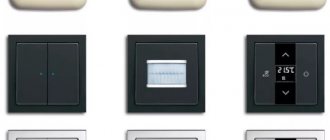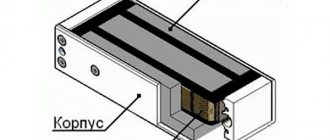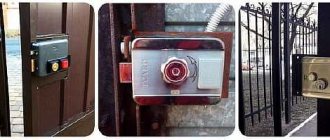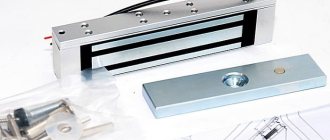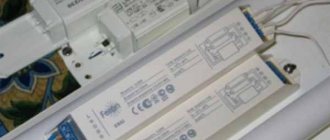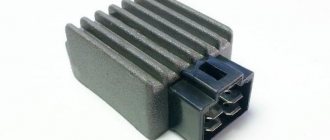The number of unauthorized home invasions around the world is steadily increasing. And the reason is not that the locking devices on the entrance doors are unreliable, but that they have not yet invented locks that cannot be opened. Only some can be cracked in a matter of minutes (the attackers have studied locks with keyholes inside and out), others last for hours (electronic locking devices). Therefore, an electronic lock on the entrance door to an apartment is becoming more and more popular.
Scope of application of electronic locks
The first electronic locks appeared on safes. At first they were an addition to mechanical locking devices, and then became an independent system for protecting the contents of a fireproof cabinet.
The next stage in the development of electronic locks is related to the restriction of employee access to office offices. They solved several problems at once:
- eliminated employee lateness to work;
- prevented chaotic walking around the premises of the company (organization);
- gave managers information about the location of the employee at any time.
The successful experience of offices and institutions was transferred to residential buildings. First, they began to install an electronic lock on the front door of entrances, then apartments and houses. Such a locking device is much more effective than mechanical analogues: it is more difficult to open and easier to handle.
At the same time, the new type of lock, like its mechanical counterpart, can be installed on a metal or wooden door, and can be mortise or overhead.
Basic designs of electromechanical locks
Among electromechanical locks, there are several types of such structures:
- Mortise electronic lock. The lock itself with the control unit is located inside the door. There are no visible handles or wells from the outside. This will complicate the attacker's intentions. And the owner himself can get in either using a remote control or a magnetic card. There are many variations.
- Electronic consignment note.
General operating principle of an electronic lock
In mechanical locking devices, the bolt is moved with a key. This happens when the notches on the English key coincide with the pins (pins) in the lock cylinder or the key bit with the levers.
In electronic locks, doors are closed/opened using electronic keys. Each of them has its own unique ID code, which is read by a special device in the lock (experts call it a “reader”) and transmitted to an electronic device called a “controller.” If the received code is stored in the controller's memory, the lock will open.
For information: the keys supplied with the electronic lock are stored in the controller’s memory. If you lose a “tablet” or card or buy new ones, the controller is reprogrammed, since it is impossible to reproduce the electronic key with the same code.
The door is unlocked using electricity (usually 12V DC), which is supplied to a small electric motor, power supply or inductor coil (selenoid) (in some cases, on the contrary, the coil is de-energized).
In the first case, when using an electric motor , the engine moves the crossbar when power is supplied using a gearbox. This type of lock can use powerful bolts - the electric motor has enough power to move them. If desired, you can install several crossbars, each with a motor and one control unit. Programming the block allows in certain situations to use not the entire arsenal of crossbars, but one or several.
Electric locks consist of powerful springs and power supplies. When energy is supplied to the locking device, the latch releases the bolt, as a result of which it can be pulled into the lock using the handle - the door will open. Taking into account the constant impact of springs on the metal of the crossbar, it is covered with carbide linings.
Selenoid locks operate on the same principle as the starter solenoid relay. When electricity is supplied, the voltage coil is excited, resulting in a magnetic field being created inside the selenoid, which retracts the bolt.
There are locks with the exact opposite effect: voltage is constantly applied to them, as a result of which the selenoid creates a magnetic field on the so-called ferromagnetic yoke, which holds the door in the closed position.
In order to open it, you need to de-energize the lock for a while. This version of electronic locking devices is ideal for entrance doors; when the power supply is lost, the door will be automatically unlocked. Locks with selenoid are durable and work at lightning speed.
How they work
According to the type of opening or closing, electronic locks are divided into:
- Electromechanical. The operating principle of most electronic-mechanical devices is simple. It has an electrically controlled locking mechanism. Electronic devices open when a signal is received from the reader. Under the action of the solenoid, the locking mechanism of the bolt is retracted and the door opens. If the door closes, the spring pushes the bolt out. It pops out and locks into the doorway.
- Electromagnetic. Electromagnetic systems work differently. Structurally, such locks are made in such a way that there are no rubbing parts in them. There is only a housing with an electromagnet and a counter metal strip. A powerful electromagnetic field closes and holds the door. The lock will open if the current supply to the electromagnet is stopped. It is difficult to simply press out such a lock, since the holding force is up to one ton. There are no moving elements, and accordingly, wear resistance increases.
The signal to open doors with electronic locks can come from various types of sensors:
- Magnetic card readers. At enterprises, cards for opening doors are issued to each employee. Such systems are well adapted to office premises with high traffic, as they are specially designed for a load of 4–6 thousand openings per day. It is impossible to counterfeit them or apply them to another electronic lock.
- From contact memory sensors.
- Reading a barcode.
- From a signal from a microchip implanted in the owner’s hand.
- From the typing keyboard.
- From molecular sensors in various combinations.
- Remote controlled sensor.
Types of electronic locks
On the shelves of hardware stores you can see many varieties of electronic locks. They differ from each other not only in design features and the method of supplying an encoded signal to the electronic unit (type of key), but also in the level of reliability (degree of protection against hacking), as well as in price, which has a very wide range.
All types of locks can be classified according to the following parameters:
- operating principle (sometimes called by control method);
- designs;
- installation location;
- type of key.
According to the operating principle
The features of various rooms where electronic locks are installed have forced manufacturers to produce two types of locking devices:
- normally closed;
- normally open.
Normally closed. An apartment, a room with material assets (warehouse, bank, museum, etc.), a safe must be protected from intruders at any time, even if the power supply to the electronic lock unit is cut off. Such locks are called “normally closed”. The door can only be opened when voltage is briefly applied to the lock.
Normally open. The situation is completely different, for example, with the entrance doors of entrances, hospitals, schools and other public premises. Here, for safety reasons, when the power supply is interrupted (during an emergency), the door must be open so that residents, schoolchildren, patients or visitors can get out of the building.
Therefore, “normally open” doors are blocked only when the coil is energized, i.e. with constant current supply. The door can only be opened by temporarily interrupting the electrical circuit. Naturally, it makes no sense to install such locks in apartments - it is enough to cut off the power supply in one way or another and the way is open.
Type of construction
Structurally, there are three locking device systems:
- electromotor (motor, electromechanical);
- magnetic deadbolts (electric blocking, electric deadbolts);
- electromagnetic (magnetic, selenoid).
Attention: in the materials posted on the Internet, the authors do not have a uniform approach to the classification of electronic locks by design. Therefore, visitors often cannot understand what is being discussed in a particular case. To fill this gap, the work collects all possible terms and organizes them.
Electromotor. Already from the name it is clear that the drive for the crossbars is an electric motor. It can only be put into operation by supplying power, which happens after comparing the key code with the combinations of numbers stored in the controller’s memory.
The door can be in the open position for a short time, after which, under the influence of the bolt springs, they return to the closed position. Therefore, such doors must be opened almost immediately after the motor is activated. The doors slam shut and go into the closed position automatically, thanks to the beveled crossbars.
Magnetic crossbars. Magnetic deadbolt locks have an inductor instead of a motor. It works in two ways:
- when voltage is applied, the crossbar (due to the magnetic field) is pulled inside the selenoid - the door opens;
- When energized, the inductor coil creates a magnetic field that removes the latch from the bolt - the door can be opened and closed with the door handle.
Electromagnetic. By constantly supplying power to the selenoid, the latter creates a very strong magnetic field on the ferrite plate, which literally sticks to another part of the lock installed on the door leaf. The only way to open the door is to interrupt the power supply.
Installation location
Depending on where the lock is installed, it can be:
- invoice;
- mortise
Overhead. Overhead locks are installed indoors on the door leaf, and the bar, which includes the crossbars, is attached to the top of the door frame. They are installed mainly on wooden doors (it is more difficult to attach to a steel sheet).
Mortise. A distinctive feature of a mortise lock is that its body is completely hidden inside the door leaf. This is the most durable type of locking device. May belong to any type of classification given in this work.
Type of key
Based on the type of key, all electronic locking devices are divided into code, digital, photo-optical and biometric locks.
Coded. Combination locks have a 64-bit ID code driven into the keys, which is stored in the controller’s memory. If the code matches, the door opens. The key can be a “tablet” or a key fob with a special chip inside (microcircuit) or an RFID card (Radio Frequency Identification) also with an electronic chip and a small antenna.
Key fob.
Key card.
All chips have a unique code. Therefore, you cannot find two electronic keys with the same combination of numbers. In order for the key to open the door, the owner of the premises or, in extreme cases, a specialist must enter the code of each key into the controller’s memory, and not just one, as often happens in practice.
Digital. A panel with a remote control is installed on the outside of the door. Typing a certain combination of numbers (code) allows you to open the door - this is a classic option. For more complex types of digital locks, in addition to the digital block, controllers for working with magnetic cards (combination with combination locks) and a keyhole for a mechanical key can be installed.
The advantages of combination locks include the ability to open the door in any available way and instant blocking of the locking device when attempting to break into the lock through a mechanical key hole. There is one minus, but a significant one - there is a high probability of cybercriminals snooping on the digital code.
Photo-optical. Electronic locks with optics for the key are gradually disappearing from the market. Here the lock is opened by a light wave of a certain length emitted by the remote control.
Biometric. This type of electronic locks is classified as smart. They have a scanner installed that reads the fingerprint of one or more fingers or the retina of the eye. Up to 10 matrices (persons) can be stored in the controller’s memory, which can open the lock.
Electronic lock with a scanner (works with a fingerprint).
Voice scanning is also practiced. It is almost impossible to open such locks. They are usually installed on armored doors in apartments with valuables (collections, large sums of cash or large quantities of jewelry). Additional types of keys are excluded.
The advantage of such a lock is that all attempts to open the lock are recorded, which allows you to see not only legitimate, but also unauthorized attempts to enter the premises.
What to look for when choosing?
When choosing a magnetic lock for a plastic door, you need to purchase only the product that is intended for this material. You cannot install a device for a metal or wooden structure on a plastic door. They differ in geometric dimensions, which correlate with the width of the profile. If you neglect this nuance, the lock will rest against the double-glazed window, which will lead to undesirable consequences.
In addition to the size of the device, you should think about the type, principle of its operation, and the number of locking points:
- For structures located indoors, a single-locking device is sufficient.
- If this is an entrance door, then it is better to choose multi-locking mechanisms.
A door closer is a good addition to a plastic door. With it there will be no pops from drafts. If its installation is not provided, then the door must be supplemented with a push handle with a latch. The lock itself can be made entirely of metal or partially of plastic. The first option is preferable because it is more durable and durable.
Before purchasing a device, you must familiarize yourself with all its technical characteristics (holding force, operating temperature range), check for a warranty card and installation instructions. For installation on the front door when operating in special climatic conditions, you need to look for locks that have double insulation on the body.
Electromagnetic locks have proven themselves well when installed on plastic doors. They have a long service life, are comfortable and practical.
Popular manufacturers and models of electronic locks
The main suppliers of electronic locks are ASSA ABLOY (Sweden), Allegion (Ireland), Dorma + Kaba (Switzerland), Samsung (South Korea), Salto Systems (Spain), Cansec Systems (Canada), as well as several companies from the USA (Spectrum Brands , Onity, Master Lock). There are some successful models from manufacturers from Slovenia, Italy, and Turkey.
Among the models of electronic locks in the top five (in the world) are:
Samsung SHS-P718 with card, remote control and scanner - South Korean combined electronic lock. It opens in three possible ways, but only two can be used in combination:
- digital - you can program a code from 5 to 12 digits on the keyboard;
- coded - an RFID card is used (the controller can remember 31 ID codes);
- biometric - based on fingerprints.
The cost of such a lock starts from 44.0 thousand rubles.
Z-wave Dana Lock - suitable for almost all doors. Its peculiarity is that it is installed instead of the cylinder lock cylinder - the locking mechanism (lock body and bolts) remains the same. The castle costs between 12.0-17.0 thousand rubles.
Kewo Kwikset is a smart lock with bells and whistles: it works not only with traditional electronic keys, but also with a smartphone. This lock has one peculiarity - in case of urgent need, it can be opened with a simple key. Costs between 12.0-14.0 thousand rubles. ($200 on Amazon). There are no dealers in Russia, so you can only buy on the Internet;
Goji Smart Lock - installed on the keyhole, blocking access to it from the outside. At the same time, if necessary, you can return to the previous method in the event of an emergency and open the door with a simple key (the outer part of the lock folds back, opening the keyhole). Interacts with both electronic keys and a smartphone. Additional features include:
- sound notification if the code does not match;
- the ability to take a photo and leave an audio message to the owner when no one is home;
- keeping records of visits using keys.
Costs from 18.0 thousand rubles. (costs approximately $278 online).
Lockitron - installed on top of the deadbolt lock. Owner identification is carried out via Bluetooth from a smartphone. The unique thing is that the lock is constantly open when the smartphone is within a radius of 10 m. When moving away from the lock, it automatically closes. It can work via a secure Wi-Fi protocol with a tablet using the entered E-mail address. Such a lock costs about 12.0 thousand rubles.
How to keep your key secret
One of the most popular keypad locks is very secure, but also very attractive to crooks. They manage to read the code by the wear or contamination of certain buttons. Advice: such an electronic lock is very reliable, but you need to monitor the condition of the buttons, regularly clean them of dirt and change them when they are very worn.
Electronic lock with key card is also in high demand. However, it can also be subject to hacking. “Craftsmen” can use special equipment and intercept the signal while opening the lock, making a similar key card. This is unlikely and costly for thieves, but it is possible.
Other models of electronic locks have more complex mechanisms that cannot be hacked.
The disadvantage of some electronic protection models is the negative impact of low temperature. Interruptions in the operation of the locking mechanism may occur. High humidity and low temperature may cause the magnetic card to malfunction. Therefore, it is not recommended to install electronic key card locks on the doors of a country house or outdoors. In this case, you can install a lock with an opening mechanism on key fobs.
Which one is better to choose?
Manufacturers of electronic locks regularly introduce new products to the market. There is no way to keep up with them, just as there is no way to recommend a specific model for an apartment. There are many nuances here. Therefore, let's go by the opposite and consider those elements in the design of the lock that are undesirable for the front door of an apartment or private house.
1. It is better to refuse a digital electromechanical lock on the front door. There are two reasons for this:
- you can forget the combination of numbers;
- attackers can snoop on the code. However, they will not necessarily stand behind the owner’s back. For this purpose, there are miniature cameras that can be installed unnoticed by the apartment owner.
Conclusion: digital locks are most aimed at internal doors of offices and service premises.
2. Biometric locks are very expensive. Therefore, they are placed mainly in apartments where there is something to protect: precious metals, currency, jewelry, various expensive private collections.
3. It is better to abandon modern bells and whistles that allow you to open the door from a smartphone (SMS messages, calls, mobile applications) using Bluetooth or Wi-Fi. After all, today there is no need to be a hacker to log into your home network or gain access to your router (Wi-Fi router). You need to buy simpler locks, which does not mean more primitive.
Conclusion: the increase in the number of lock control options proportionally reduces the reliability of the electronic locking device.
4. People say that “a greedy person pays twice, a fool pays three times.” This fully applies to electronic locks. All versions of electronic locks cost less than 2.0-3.0 thousand rubles. The main function is not to protect the premises from illegal entry, but to control access.
The weak point of such locks is the bolt - shiny, beautiful, but made of fragile silumin (an alloy of aluminum and silicon). Therefore, cheap lock models should not even be considered .
5. The electromagnetic lock on the entrance door to the apartment must have an “always closed” control so that when the power supply is cut off, the door does not become unlocked.
By following the recommendations given, you can always choose the most optimal lock option for yourself. To make it easier to navigate, we present the most popular types of locks at the beginning of 2019 in Russia (does not coincide with global trends):
- ATIS LOCK electronic lock with contact keys (key fob), electromagnetic and mechanical drive (can be opened and closed with a simple key), delivery note, costing from 4.0 thousand rubles;
- electronic lock ATIS AM 280 on key fobs (radio key), electromagnetic drive, mortise, price from 4.0 thousand rubles;
- magnetic deadbolt lock AB700A on key fobs (radio key), electromagnetic drive, mortise, price from 4.2 thousand rubles;
- electromechanical motor lock “Dori-4” Classic, overhead, digital, price starts from 9.0 thousand rubles.
How to choose
Choosing the right electronic lock model is very important. Not only does it have to fit the door, its ergonomics and price are also of great importance. And there is plenty to choose from. And the price of the device may vary, the main thing is to decide what functions it should have:
- Do I need a smartphone compatibility feature?
- Size of display and keyboard buttons.
- Key fob range.
- Low battery signal.
- Possibility of remote blocking and connection to the security system.
- And in general, how difficult it is to break it.
Security experts say that locks are definitely not the place to skimp.
How to install rim locks
Despite their apparent complexity, electronic locks are quite easy to install on your own. All work can be divided into three stages:
- purchase the necessary materials and tools;
- make markings;
- install a lock.
Materials and tools
To install an electronic combination lock on your front door, you must have:
- electronic locking device;
- electric drill or screwdriver with a set of drills;
- a Phillips screwdriver or appropriate screwdriver bits;
- roulette;
- square;
- marker or construction pencil.
Marking
Using a tape measure, a square and a pencil, the location of the lock is determined, as well as the location of the fasteners. For this:
- at a distance of approximately 1 m from the floor it is necessary to make a mark with a pencil;
- then mark the location of the lock body and its fasteners on the door leaf, as well as the location of the reading device passing through the door leaf (the process can be greatly simplified: attach the lock to the door and trace it with a pencil);
- drill holes for fasteners (the drill should be slightly smaller in diameter than the fastening screws);
- drill a through hole for the reader wires (it can be located anywhere - the main thing is that the wires are long enough);
- secure the body;
- mark the strip on the door frame, including marking the locations for the fastening bolts;
- use a screwdriver or electric drill to drill holes for fastening the strip;
- set the bar;
- check the movement of the bolts or locking tongue into the strip. If the movement is difficult (they cling to the box or bar), the installed body or bar is adjusted.
Installing a rim lock
The most difficult stage is installation. It does not involve mounting the case on the door, but assembling the lock elements into a single whole. Knowing a few simple rules will help here:
- the reader is mounted on the outside of the door. It can be attached anywhere, but in such a way that the length of the wires is enough to reach the electronic block of the lock. Twisting (extension) is strictly prohibited;
- all wires are placed in corrugated polyethylene tubes to avoid the influence of high humidity and accidental mechanical impact;
- The control unit is placed according to the diagram specified in the instructions. Depending on the lock model, the block may be in the lock body or next to the adapter (adapter - current converter);
- programming of the controller is carried out strictly according to the instructions.
How to install mortise locks
Installing a mortise lock on a new door is more difficult than installing a door lock. But if a mechanical lock is replaced with an electronic one, everything is much simpler.
Let's consider the most complex option. Here the algorithm of work is as follows:
- the door leaf is removed from the hinges and placed on its edge, with the lock end facing up;
- mark the recess for the lock body - it should be 2-3 mm larger;
- use a chisel and an electric drill to select a recess (for metal doors you need a grinder and metal drills with a Pobedit tip);
- the installation location of the reading mechanism is determined;
- a hole is drilled for the wiring from the reader;
- The connection is made according to the diagram given in the instructions (if there is none, everything can be found on the Internet on the manufacturers’ websites).
Smart locks: what they are, how they work (and who installs them)
In the good old series about space, like Star Trek, people had no paranoia at all. Why? They all used smart locks. The hero approaches the door - and it opens. Straight through the sci-fi equivalent of Face ID. Now smart locks already exist and work. We tell you more about the types of smart locks, pitfalls and specific devices.
For the paranoid
A lock and key are needed to keep honest people out of your home.
When it comes to smart locks, many switch to a mode of complete distrust of the new technology (on Habré too). The iron door and the iron key remain an infallible totem of security for our people. Meanwhile, a regular lock does not guarantee it.
A skilled burglar can open a lock with a master key in 10 minutes. In practice, the criminal is not even interested in the door, but in the plastic window or balcony on the lower floors, because they are easy to open from the outside. According to Rossiyskaya Gazeta, 1.5 thousand burglaries were recorded in Moscow in 2022. Dangerous districts - Southern, Eastern, Northeastern. Dangerous times are summer and New Year's holidays, when the owners are not at home. There is a positive trend: since 2016, the capital has seen a decline in registered burglaries. However, they happen, and ten mechanical locks on the door do not save you.
A smart lock differs only in the way it interacts with the locking mechanism and the bolt (bolt). Instead of a physical key, there is an electronic filling and a motor. Instead of turning the key, you enter a code, place your finger on the scanner, or press a button in an app. Comfortable.
But what about the possibility of a hacker breaking the lock? She really is. In 2016, security researcher Anthony Rose gave a talk at Defcon about how he bought 16 smart locks from Amazon and hacked 12 of them using fuzzing, spoofing, and password guessing. Sometimes something worse happens: a company releases an update that turns a smart lock into a regular one.
This is an outrageous situation. Imagine what would happen if, for thousands of years, we used a patently insecure technology with a well-known hacking method. For example, a lock that can be opened with a master key, a crowbar, a hairpin, a good blow, and so on. A device that protects property throughout the planet. A ticking bomb.
Humor aside, the situation was best described by MIT professor Stuart Madnick. By replacing a regular lock with a smart one, we exchange a set of risks for others, but at the same time gain convenience. “Are you ready to trade your car for a horse?” Madnik asks. For those who are not ready, Madrobots has some interesting gadgets.
Universal smart locks
Such devices are needed to protect a bag, backpack, or locker in a fitness club from tampering. Traditional place of application: garden gates. A good touchstone for those who would like to install a smart door lock, but are afraid to take a radical step.
Universal electric lock GLS Bt+F
In Russia, this lock is sold under the Grand lock systems brand, although in its maidenhood it was known as Nokelock. In fact, his application is called Nokelock (available for iOS and Android). The main advantage: opening by fingerprint reading.
GLS Bt+F is a small padlock: 50x78x23 mm, which weighs 50 grams. It has a fingerprint sensor on the front, some “brains” inside and a Bluetooth module with a range of 1 meter. The case has a shell protection rating of IP65: the lock will withstand rain and a shower from a garden hose, but swimming in a well will not.
The 130 mAh battery is recharged via a microUSB cable. If the lock is discharged, it will start again from any power bank.
The lock remembers 16 different fingerprints and can be used by different people. The application records the last 1000 uses of the lock. The lock can be opened with your finger or an app (in case your fingerprint cannot be read).
Universal electric lock GLS Bt
Alternative to GLS Bt+F without fingerprint reading. It is controlled through the same Nokelock application, to which it connects via Bluetooth. The dimensions of the lock are 50 x 78 x 23 mm, weight - 50 grams. The housing protection is the same, IP65.
The lock is powered by an 800 mAh battery and is charged via a microUSB cable. In theory, one charge should last him for a longer period than his “smarter” brother.
You can share access to the lock with another person through the app. This also works for GLS Bt+F.
Smart bike locks
The most suitable way to use smart locks is to protect bicycles from theft. You park the “iron horse” and close the lock with your smartphone. There's no need to fiddle with keys, just press a button in the app.
Electric bicycle lock GLS Velolock Bt
This is a cable lock, it secures the bicycle to a stationary object with a flexible braided steel cable. The length of the cable is 110 centimeters, the diameter is 8 millimeters, and together with the lock it weighs 400 grams. The case is waterproof, IP65 (the main thing is not to drown it in puddles).
The GLS Velolock Bt can be locked and opened via the Nokelock app. The gadget connects to the smartphone via Bluetooth. The 800 mAh battery is charged via microUSB.
As with universal padlocks, the app allows you to share access to the lock. No need to give physical keys to anyone: share access, and the right person will be able to open the GLS Velolock Bt and ride the bike.
The security of the GLS Velolock Bt is the same as that of other cable locks. It is durable, but if you really want to, the cable will be cut. At least no one will hack it on a dare, as happens with combination cable locks. And the gadget definitely won’t be opened with a master key.
Electric bicycle lock GLS U-lock Bt
GLS U-lock Bt, as the name suggests, is a U-shaped lock. The design is more reliable than a cable one, because the arc is more difficult to bite through. But the lock is heavy and cannot be used anywhere; you need a bike rack or a fence. Which is better is a matter of cyclist preference.
The height of the GLS U-lock Bt arch is 32.5 centimeters, the width is 15 centimeters. The lock is metal and weighs 1.15 kilograms, the case has a protection class of IP65. The battery capacity is 800 mAh, charged via microUSB.
GLS U-lock Bt works in a similar way: install the Nokelock application and connect the lock via Bluetooth to your smartphone. After that, you open and close it at the press of a button, share access with your loved ones, and keep track of who used the lock.
The model has a traditional key that can be used to open it in case of technical problems or loss of the smartphone with the application.
Smart door locks
These are serious and real door locks that work without a physical key.
They are opened by a code, a fingerprint and an application on a smartphone. It's comfortable. Children, family members, caregivers, nannies, tutors, friends, workers - there is no need to make additional keys for each or waste time handing over a single spare set. Add the person you need to the application or create a code for them. Sesame will open. The workers have finished the renovation, does the child no longer need a nanny? Remove unnecessary profiles, change the code. Unlike a physical key, you are always in control of a digital key. If the unscrupulous worker does not have a duplicate key left, then there is no need to change the locks.
Madrobots founder Nikolai Belousov uses the Aqara smart door lock. It was installed by our friends from Clicker. Watch a video about this experience:
Xiaomi Mijia Smart Door Lock: smart door lock with biometrics
This set consists of a lock and a pair of door handles with a long base. Mijia Smart Door Lock supports six opening methods:
- by fingerprint;
- permanent code;
- time code;
- via NFC application;
- via an application via Bluetooth;
- mechanical key.
Yes, many smart door locks can be opened with a spare physical key,
including Mijia Smart Door Lock. It has a mechanical part with a cylinder (class C) and a key, which is needed in case of failures of other systems. The keyhole is covered by a round plug. The design is durable: in theory, if an attacker destroys the front panel, he will still have to fight the mechanism inside the door.
The Mijia Smart Door Lock body is black, with a simple design. The outer half has a glass LED display for entering the code. The device is protected from electromagnetic influence so that a smart guy with a Tesla coil won't break it. Seven security sensors are built inside:
- key presence sensor;
- oblique tongue position sensors;
- rectangular tongue position sensor;
- corner tongue position sensor;
- locking tongue position sensor;
- front panel tamper sensor;
- handle pressure sensor.
Sensors monitor the condition of the lock and send notifications about suspicious situations. To do this, you will need to connect the lock to the Mihome smart home via a Bluetooth gateway. This additional step, among other things, gives access to interesting automation. Let's say opening the door turns on the light in the apartment. Great, just like in movies about the future!
On the axis of the handle there is a fingerprint scanner, which can distinguish real fingerprints from “non-living” ones. In practice, the scanner can even see wet fingers.
Mijia Smart Door Lock has limitations. The gadget cannot be installed on wrought iron or glass burglary-resistant doors. Plus, it needs plenty of space: a footprint of 365.6 x 75.6 millimeters. Before purchasing, you need to check that the smart lock will fit correctly.
The lock is powered by eight AA batteries. In standby mode, the charge will last for 15 months. The application warns you in time when they need to be replaced. If the inevitable happens and you forget to change the batteries, the lock can be powered externally from a power bank via the microUSB input and the door can be opened.
Samsung SHP-DS510: smart lock without frills
This smart lock works with codes, RF cards and a spare mechanical key. Samsung SHP-DS510 is good because it fits into a regular cutout with a diameter of 54 mm. The kit includes an electronic part with a cylinder, spare keys, a deadbolt and a counter part. There is no handle, but there is a magnetic sensor that determines whether the door is closed. Some smart locks lock on a timer and do not “understand” that the door is being held open on purpose. The Korean castle understands everything perfectly.
The SHP-DS510 case material is steel, aluminum and polycarbonate. The front touch panel with display is glass. To prevent fingerprints from remaining on it, which would give out the code, the lock has a “protection” system. The LED display first shows a couple of random numbers that need to be pressed, and then turns on all the buttons.
The lock's memory can store hundreds of passwords or RF cards. The length of one password is 4–12 characters. There is only one limitation indicated on the thickness of the door: 35–55 millimeters. An important point: there is no application, the lock works autonomously from the smart home and is configured separately, through buttons on the display. But he explains what is happening using voice messages and signals. Sound volume is adjustable.
The SHP-DS510 lock is powered by four AA batteries, which will last for a year of operation. When the charge starts to run low, a warning will appear on the display. If the batteries are low, the lock can be easily brought back to life by touching the contacts with a 9V battery.
Danalock V3 Bluetooth + Z-wave: minimalistic, fashionable, youthful
Danalock V3 is a smart lock, which its creators position as the most user-friendly model. You can install it yourself: it fits standard door cutouts and comes without a deadbolt or external panel (read more here). The kit includes: spare keys, cylinder, bolts, linings and a part with a motor, handle and electronic filling.
The motor turns, opens and closes the door. The body is made of anodized aluminum. When the lock opens, the LED strip on the housing lights up green. When it closes it is red. The lock is powered by four CR123A batteries.
It is assumed that you already have a conventional lock design. You unscrew it, pull out the cylinder, replace it with the one that comes with the Danalock V3. Then replace the fittings on the inside of the door with a housing with a motor. Outside there is a keyhole for a mechanical spare key, inside there is expensive electronics that will not be destroyed by vandals. The popular August Smart Lock is installed in exactly the same way. Danalock is its successful competitor.
The key is needed for emergencies. Typically, Danalock V3 is opened through a proprietary application on a smartphone. The smartphone connects to the lock via Bluetooth 4.0, and the data is encrypted using the 128 bit AES algorithm. To operate, it is enough to be within the communication range. Through the administrator account, virtual keys are distributed to other family members or friends. The lock is compatible with a smart home based on Z-Wave. If you connect Danalock V3 to the hub, there is a wide scope for automation, as well as remote access and notifications about who used the lock and how.
You can purchase all the smart locks described in the article in our online store. Stop living in the past: it’s not safe, it’s just inconvenient.
Pros and cons of using electronic locks
The transition from mechanical locking devices to electronic ones is due to the undeniable advantages of the latter:
- more reliable: difficult to open - there is no keyhole for master keys, and code selection is unlikely. Biometric locks cannot be opened at all - they can only be broken using physical force; have several levels of protection; difficult to break into - it is impossible to determine the location of the crossbars from the outside; the service life of the latest generation models is 2-3 times higher than that of their mechanical counterpart (previously produced electronic locks had microcircuits as their weak point); almost all models are blocked if opened unauthorized;
- simple and easy to use;
- open very quickly, and with a selenoid - instantly;
- work silently;
- can be installed on any door;
- the key cannot be faked, and if a tablet or card is lost, its code is simply removed from the controller’s memory;
- almost all models can be assembled by hand;
- re-programming of the controller is available to persons who have primary skills in handling electronic gadgets (smartphones or tablets), which allows owners to carry out such work with their own hands;
- electronic locks can be linked to a mobile phone, which will simplify the process of opening doors;
- remote opening;
- easy unlocking in case of force majeure circumstances.
In addition to the strengths, electronic locks also have disadvantages:
- the rather high cost of the lock itself (certain types reach 60.0-80.0 thousand rubles) and its installation, if specialized organizations are involved, as well as operation;
- dependence of electronics on the availability, as well as, importantly, on the quality of electricity;
- low resistance of microcircuits to temperature changes and high humidity;
- In many lock models, when the door is open, bolts protrude from the end of the door leaf, which often get caught and damage clothing.
Design features
An electronic lock for an entrance door consists of a magnetic or mechanical drive (electric type) and an electronic unit. In an electromechanical drive, the bolt that opens and closes the lock is controlled using a low-power solenoid. In electromagnetic security mechanisms, the bolt is controlled by an electromagnet: thanks to the resulting powerful electromagnetic field, the door is held closed.
All electric locking mechanisms on the market can be conditionally divided into the following groups:
- Coded electrical mechanisms. These devices are opened by dialing a specific code. Their disadvantage: over time, those keys that are typed more often wear out, making it easier to guess the code. Installation of such mechanisms is recommended on metal entrance doors or gates.
- Biometric electrical mechanisms. Doors equipped with such locking mechanisms are opened using fingerprints programmed into the database.
- Invisible electric locks. The locking electric mechanism is hidden in the door leaf: there are no buttons or other external devices for opening. To open the front door with such a “guard,” you will need a magnetic card or a special key fob, or a special program installed in your mobile phone.
In order for the locking electric mechanism to function properly, its installation must be carried out in accordance with all the rules.
